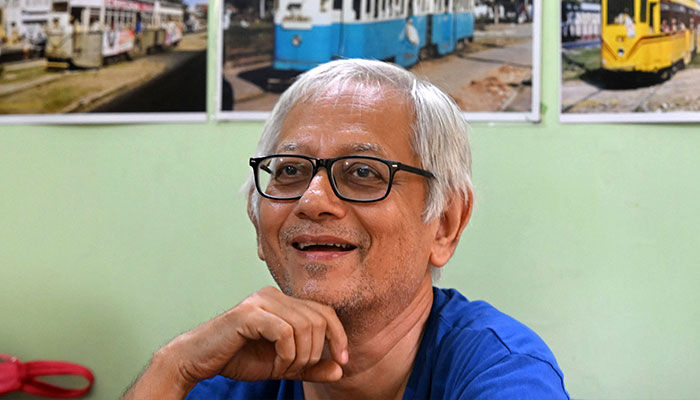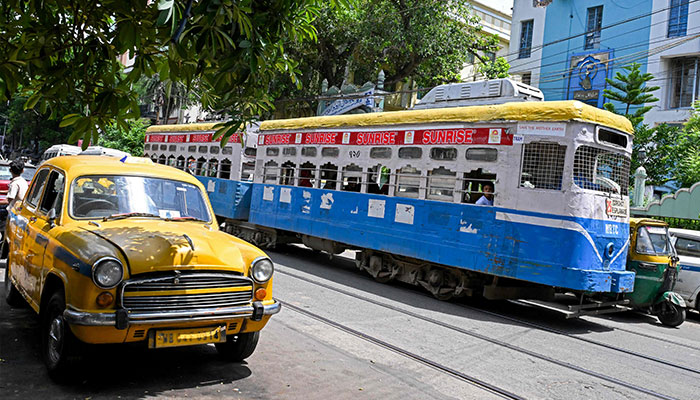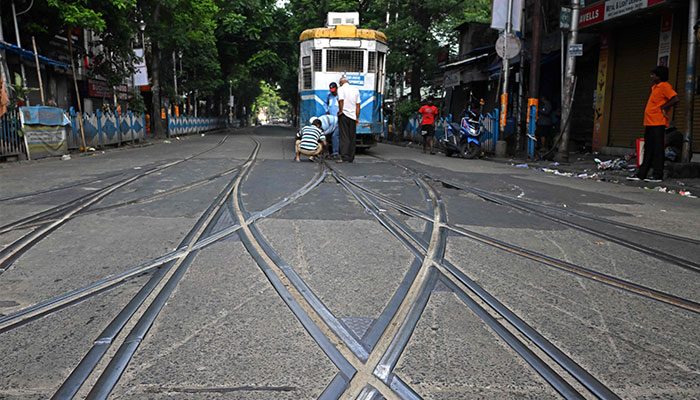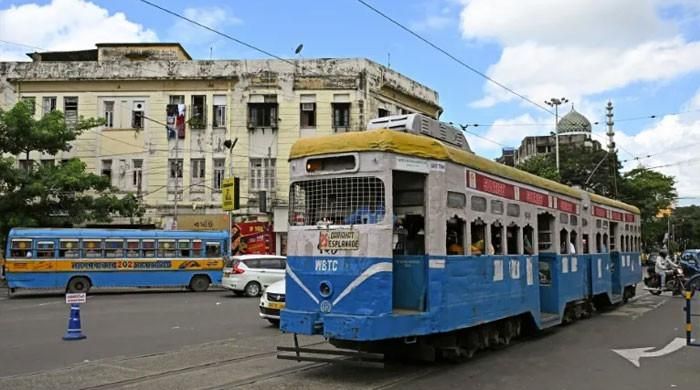KOLKATA: The sound of a tram bell as it rolls through the streets of the Indian city of Kolkata is all Deep Das needs to have the “happiest moment” of his day.
“There were times when buses came frequently… but I kept waiting for the tram,” says the 18-year-old student.
But while its fans hail the slow-moving transport system as the “glory” of the megacity and an integral part of the growth of historic Kolkata, the 151-year-old network is under threat.
The indifferent attitude towards the maintenance of the tram system has contributed to its slow deterioration.
Das is part of a group of enthusiasts called the Calcutta Tram Users Association (CTUA) that is fighting to protect trams.
Debashish Bhattacharyya, a CTUA leader and retired biochemist, argues that city authorities risk losing a cheap transport solution with green credentials.

“The investment required is minimal,” Bhattacharyya said, accusing politicians of ignoring the potential “economic success” of trams.
“The lifespan of trams is 50 to 80 years, compared to five to ten years for buses, and their operating costs are minimal.”
Trams evoke the soul of the city for many, he said.
“This is the only city in India with trams,” he said.
“If this is eliminated, this glory will be lost, not only for the city, but also for the country,” he warned.
'Facing adversity'
Introduced to the sprawling eastern city in 1873, during the early days of the British Imperial Raj, Calcutta's trams were initially horse-drawn and later steam-powered.
Electric trams hit the streets in 1900.
The tram now makes its way through the city's winding streets, weaving through confusing traffic jams of old yellow taxis, trucks, buses, cars and sometimes livestock.
Sometimes the tram infrastructure acts as clotheslines, with clothes fluttering in the wind.

The single-decker trams, painted in uniform stripes of bright blue and white, with a bright yellow hood, move at about 20 kilometers (12 miles) per hour at best, when not stuck in traffic.
The state's West Bengal Transport Corporation claims its trams are cheap, safe, produce noxious fumes and are economical, carrying five times more passengers than a bus, and considers them part of the city's “glorious past, present and future”.
“While it is true that their numbers have declined drastically… the Calcutta tram has managed to defy the odds,” he argues.
'The ancient identity of the city'
Rides cost seven rupees ($0.08), less than a cup of tea on the street and cheaper than the bus.
But since they now operate on irregular schedules, many travelers prefer to pay more to arrive on time.
Although the tram has fixed tracks, India's free-wheeling obedience to traffic rules means anyone can overtake it.
So the tram has to give way and there is zero room to manoeuvre on the street.
But for many passengers, it's a trip down memory lane.
Professor Ram Singh, 54, said the journey reminded him of his childhood, when trams were a vital part of the city's public transport system.
“We used to travel by tram and get off after one or two stops, then get on the tram on the other side and get off from there too,” he said with a laugh.
“That way, we could travel by tram and not have to pay for tickets.”

Trams now only operate on two lines in the city, compared with a previously extensive network with dozens of routes.
In one place, dozens of train carriages lie abandoned, rust eating away at their colours; some dating back to the 1940s.
“Cities need to develop, but along with that, history must also be preserved,” Singh said, calling the trams “the city's ancient identity.”
Das' group organizes community meetings, puts up posters and tries to address the challenges facing the trams.
But his job also requires him to monitor breakdowns and electrical problems, a stark reminder that the trams' life may be coming to an end.
Undaunted, he vows to fight for his future as hard as he can.
“I love my trams more than myself,” Das said.
“I will do everything possible.”












